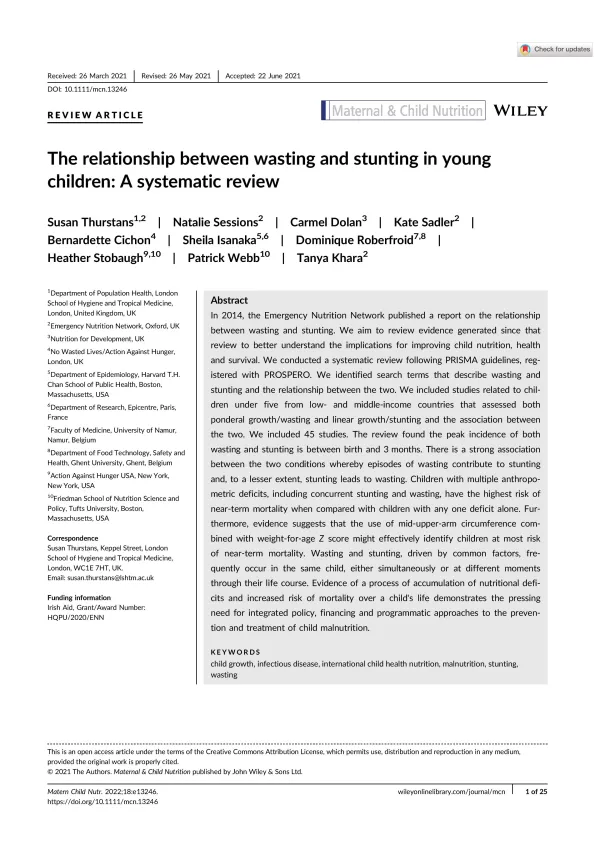The relationship between wasting and stunting in young children: A Systematic review
Publication details
Abstract
In 2014, the Emergency Nutrition Network published a report on the relationship between wasting and stunting. We aim to review evidence generated since that review to better understand the implications for improving child nutrition, health and survival. We conducted a systematic review following PRISMA guidelines, registered with PROSPERO. We identified search terms that describe wasting and stunting and the relationship between the two. We included studies related to children under five from low- and middle-income countries that assessed both ponderal growth/wasting and linear growth/stunting and the association between the two. We included 45 studies. The review found the peak incidence of both wasting and stunting is between birth and 3 months. There is a strong association between the two conditions whereby episodes of wasting contribute to stunting and, to a lesser extent, stunting leads to wasting. Children with multiple anthropometric deficits, including concurrent stunting and wasting, have the highest risk of near-term mortality when compared with children with any one deficit alone. Furthermore, evidence suggests that the use of mid-upper-arm circumference combined with weight-for-age Z score might effectively identify children at most risk of near-term mortality. Wasting and stunting, driven by common factors, frequently occur in the same child, either simultaneously or at different moments through their life course. Evidence of a process of accumulation of nutritional deficits and increased risk of mortality over a child's life demonstrates the pressing need for integrated policy, financing and programmatic approaches to the prevention and treatment of child malnutrition.
Key messages
- A significant proportion of wasting and stunting is present at birth and can contribute to further growth failure during subsequent infancy and childhood. Improving maternal health and nutrition in pregnancy and early life could have a critical role in the prevention of wasting and stunting.
- Periods of wasting leave a child more likely to experience stunting and, to a lesser extent, vice versa. Common risk factors drive an accumulation of vulnerabilities. This underlines the need for cohesive policies and the implementation of services and activities to prevent both wasting and stunting.
- Concurrently wasted and stunted children have an elevated risk of death and should be considered as a high-risk group in the targeting of treatment.
- A combination of weight-for-age Z score and mid-upper-arm circumference may be the most effective way to identify children at highest risk of mortality, including those concurrently wasted and stunted. Further evidence is needed to understand the operational implications.
